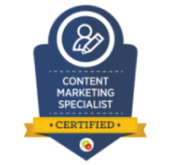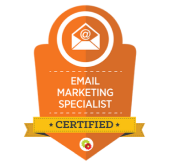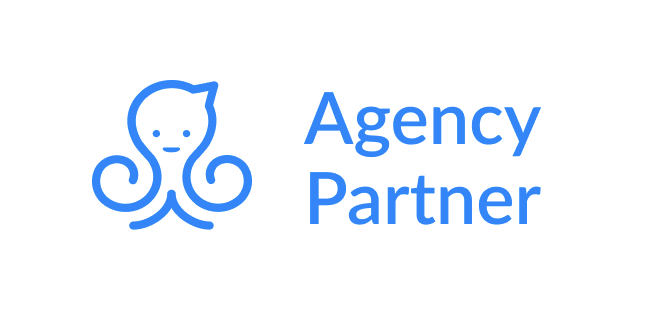Ever been on a bad date?
That’s essentially what a bad outreach strategy is: it starts with hope but quickly ends in a bitter anti-climax because the other party is just not that into you (or your brand).
Imagine you’re a professional clown on a first date (that’s right, you’re a clown).
You’ve met someone for drinks, you’ve been chatting to them for an hour or two and they seem really interested in what you do, and vice versa.
Feeling positive vibes, you arrange a second date and surprise them by making them a balloon animal before their very eyes… only to see a horrified expression on their face as they quickly reveal they have globophobia (a fear of balloons).
Sorry, but they’re really not that into you.
Just like a date, if you don’t put together a proper outreach strategy from the start and reach out to the wrong audience – it doesn’t work out.
Here’s why and how you can avoid the same deflated balloon-animal-effect in marketing…
The power of 3
3 quick wins
Whether you’ve never had an outreach strategy before or tried, failed and chosen never to repeat the same mistake again – here are 3 quick outreach wins to help motivate you from the get-go:
- Increase your traffic → By reaching out to the right influencer, you can increase the traffic to your company website, campaign microsite or landing page due to a retweet or link they have shared with their followers.
- Boost your reach → Your campaign or content will be accessible to potential leads who aren’t subscribed to your emails, newsletters or social channels, including niche audiences you hadn’t been aware of.
- Improve your credibility → It can be difficult being recognised as a thought leader in your specific field or sector to grab the attention of your audience with rich and relevant content… which is why having a known and revered expert engaging with your content and advocating your brand will up your credibility.
3 mistakes to avoid when doing outreach
There are also 3 things you should avoid when planning your outreach strategy to ensure you reap the above rewards:
- Don’t be generic → You don’t want to appear insincere when pitching to an influencer, so avoid any copy and paste jobs. You can draft templates for your communications, of course, but make sure you personalise your messages, don’t include irrelevant information that applied to another influencer you contacted and don’t send out the same email to multiple recipients in BCC.
- Don’t be selfish → It’s easy to ask for something that benefits you… but reaching out is about establishing a partnership. It’s all about quid pro quo. If you present your pitch as an opportunity and outline what you can do for them (e.g. sharing their content or offering guest blog space on your site) the response it’s going to be more favourable.
- Don’t forget to follow-up → One message is not enough. If you don’t hear back immediately, you shouldn’t be surprised. At the same time, you don’t want to take it personally or be afraid of hounding them with a follow-up. Again, like a date, don’t send another message in 24-hours or less, wait approximately 3 days to give them a nudge.
Do it by email
Email is a great way to share content – from promotional messages and sharing content, to welcoming new prospects and customers to your business.
According to Statista, 293.6 billion emails were sent and received each day in 2019.
So, how do you get yours to stand out and get opened?
Campaign Monitor reports that, depending on the email content, subject line and preheader text, the average open rate of a marketing email in the UK is 17.5%, with a click-through-rate (CTR) of 2.4%.
What can you do to improve these statistics?
- Optimise subject lines and preheaders → To be more engaging and non-salesy, you can pose questions, use emotive words, personalise with the recipient’s first name… and add emojis to stand out!
- Test your subject lines → Which copy is performing best? With larger audience lists, you can A/B split test your subject lines to see which one generates more opens with a sample audience. Then you can check the results to send the better performing subject line to the rest of your audience.
- Send at the best time of day → Emails sent over the weekends don’t perform well. Ideally, prepare to send emails on Tuesdays to Thursdays. Mondays are likely to be overlooked as it’s the start of the week and they’ve got meetings, etc. Fridays are no-nos too, as people are already in that TGIF ‘weekend mode’.
- Reach out with relevance → Check social profiles, websites and blog sites to discover who would be more receptive to your message. When sending the introductory email, include relevant content, images and links that link your content to the content on their platforms and channels. This will demonstrate an affinity and value to your message.
Don’t forget social
Who isn’t on social, right?
It’s easy to find out who you should be connected with to create a list for your target outreach audience.
Start by searching hashtag topics related to your brand in the Twitter search bar to see which people are using these hashtags in their Twitter posts.
Whittle down which users you want to contact by checking the information in their profile bio and links to any personal or professional website.
Don’t forget to check how active they are on Twitter, along with their number of followers. More followers and frequent activity mean a greater audience your content can be shared with.
A quicker approach is to use BuzzSumo to search for influencers on Twitter, YouTube and online authors to cast the digital net even wider.
Simply enter your key search terms and BuzzSumo generates a list of names and profile handles to reach out to.
Once you’ve compiled your influencer outreach list, map out your next steps:
- Follow them, like posts regularly and comment on relevant posts
- Send a DM to introduce yourself and mention posts or content they’ve shared that’s related to your own content or brand values
- Propose a mutual relationship to share content on a regular basis
6 convincing benefits
If you or your boss aren’t quite convinced and need to know more benefits before you decide to dedicate valuable time to set up an outreach strategy, here are 6 of them to consider:
- Higher conversions → With increased brand awareness and more traffic to your site or landing page, the better chance there is of converting visitors to customers.
- Rise in SERPs → More clicks on your site from increased traffic to your site will result in higher Search Engine Results Pages (SERPs).
- Boost your EAT value → Increasing the Expertise Accuracy Trust (EAT) of your website due to high-quality links between your content and trusted third party experts will be recognised by Google and improve your SERPs.
- More new customers and content → Getting influencers to experience and review your products or services will engage new customers with their credible reviews. Plus, influencers love to create new and engaging content, which you can share and repurpose as part of your own content strategy.
- Long-term relationships → Not only will establishing a relationship with influencers help the launch of your current campaign – sustaining a partnership with them will benefit your future campaigns and make the outreach process even easier.
- Cost-effective approach → Instead of outsourcing consultants or agencies that specialise in outreach strategies, you can generate the traffic you need from your target audience from a shared ad, social post or landing pages for free (based on a mutual partnership agreement).










